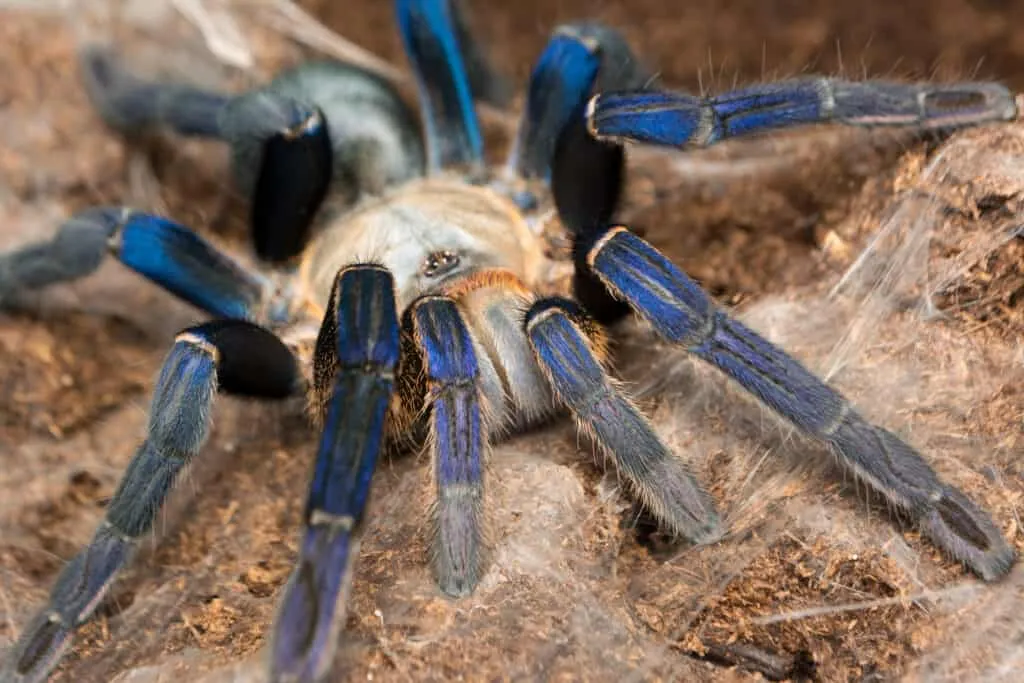Tarantula Care 101
Caring for a tarantula can be a rewarding experience, offering a unique perspective on the natural world and the opportunity to observe fascinating behaviors. Tarantulas, while not cuddly pets, are relatively low-maintenance and can make excellent companions for those who appreciate these incredible creatures. This quick guide will provide you with the essential information needed to understand and successfully care for your tarantula. From selecting the right species to setting up their habitat and understanding their needs, this guide covers the key aspects of tarantula care, ensuring you and your pet have a positive experience. Proper care is crucial for the well-being of your tarantula, contributing to its longevity and overall health. With the right knowledge and preparation, you can create an environment where your tarantula can thrive.
Choosing the Right Tarantula
Choosing the right tarantula species is the first and most important step in ensuring a successful tarantula-keeping experience. Different species have varying temperaments, care requirements, and sizes, so it’s essential to select one that matches your experience level and lifestyle. Beginners should opt for docile, easy-to-care-for species, while experienced keepers might explore more challenging and exotic options. Careful research into the specific needs of each species will significantly impact your ability to provide the best possible care. Consider factors like the tarantula’s temperament, size, and the availability of food and supplies in your area. Some species are known for their docile nature, making them ideal for those new to tarantula keeping. Others may be more defensive or require specialized care, so always prioritize your comfort level and ability to meet the animal’s needs. Careful selection ensures both you and your tarantula can enjoy a fulfilling experience.
Research Different Tarantula Species

Before acquiring a tarantula, thorough research into different species is essential. Learn about their specific needs, including habitat requirements, feeding habits, and temperament. Websites, books, and experienced tarantula keepers can provide invaluable insights into each species. Focus on species that are known for being relatively docile and hardy, such as the Chilean Rose Hair Tarantula (Grammostola rosea) or the Pinktoe Tarantula (Avicularia avicularia). Understanding the natural habitat of the species will guide your enclosure setup, and knowing their dietary preferences will help you provide appropriate nutrition. Also, familiarise yourself with the signs of a healthy tarantula, such as an active appetite and a normal walking gait. Look for credible sources of information, and be cautious about advice from unverified sources. This preparation will help you make an informed decision and set up a suitable environment for your new pet.
Consider Temperament and Size
Temperament and size are critical factors in choosing a tarantula species. Some tarantulas are docile and less likely to bite or flick urticating hairs, while others may be more defensive. Research the temperament of the species you are considering. Size is another important consideration. Larger tarantulas require bigger enclosures and more space, potentially impacting their overall maintenance. Keep in mind the space you have available and the amount of care you can comfortably provide. Smaller species can be ideal for beginners or those with limited space. Consider the potential growth of your tarantula and the ultimate size it will reach. Some species may grow to significant sizes, necessitating a larger enclosure and increasing the amount of food required. It is a delicate balance between your capacity to care and the needs of the animal, so choose wisely.
Setting Up the Tarantula Enclosure
Creating the right environment is one of the most crucial aspects of tarantula care. A well-designed enclosure will not only house your tarantula but also contribute to its overall health and well-being. The enclosure should mimic the tarantula’s natural habitat, providing security, comfort, and opportunities for natural behaviours. Consider factors such as size, ventilation, substrate, and temperature and humidity levels. A proper enclosure will allow the tarantula to thrive, reducing stress and promoting a longer lifespan. Proper setup also involves the placement of essential elements like water dishes and hiding places. Providing a secure and comfortable enclosure is essential for your tarantula’s health, and it also ensures your interactions with the tarantula will be safer and more enjoyable. Think of the enclosure as the tarantula’s home, and make it a place where it can flourish.
Choosing the Right Enclosure
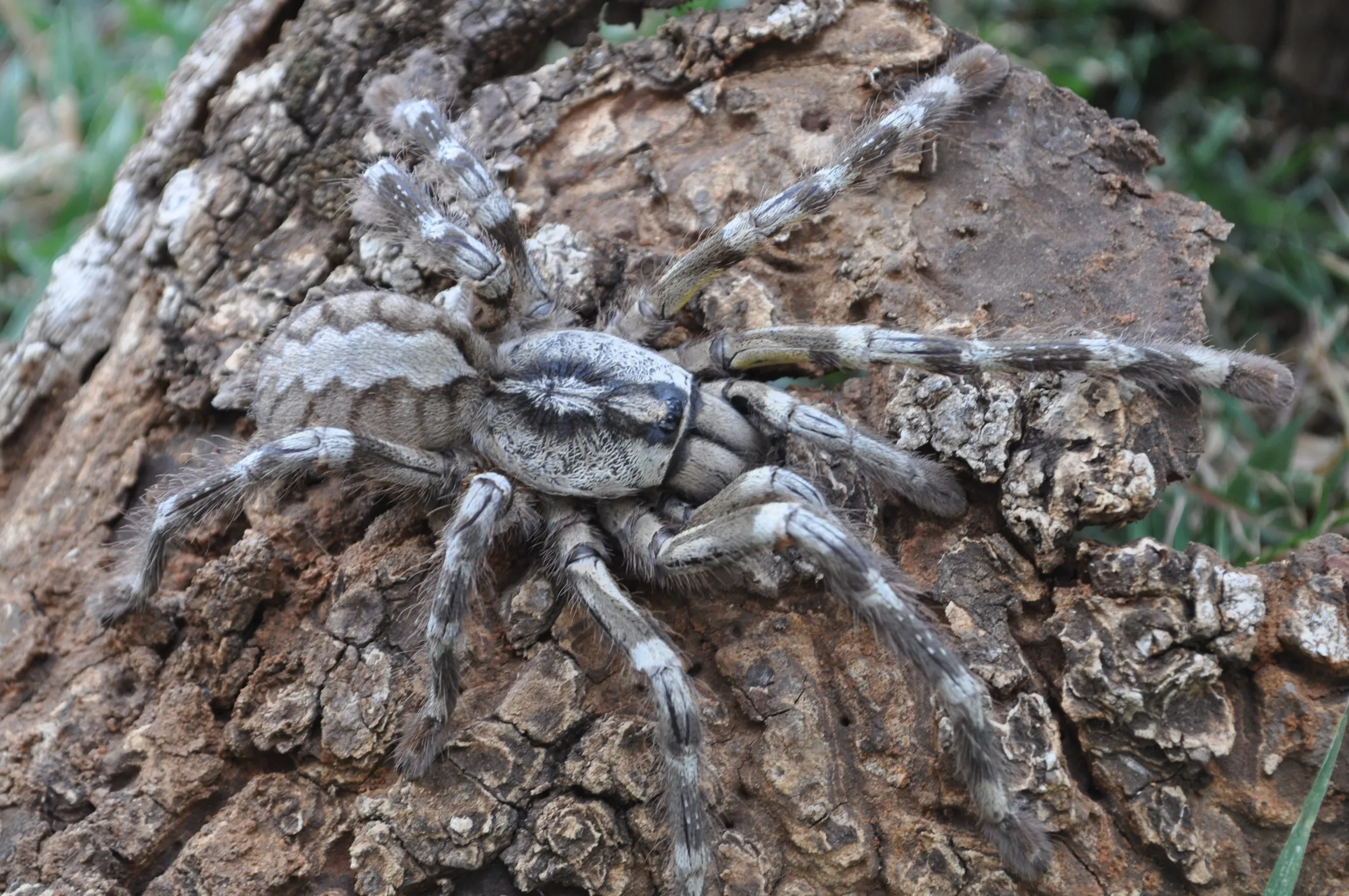
The enclosure should be appropriately sized for the tarantula’s species and size. A secure enclosure prevents escapes and provides adequate space for the tarantula to move and behave naturally. Glass or clear plastic terrariums are popular choices, allowing for good visibility and easy cleaning. Ensure the enclosure has a secure lid to prevent escapes. A well-ventilated enclosure will help maintain air quality and prevent the buildup of harmful gases. The enclosure should be large enough for the tarantula to move freely, and it should also provide space for the substrate, hide, and water dish. Remember to consider the adult size of your tarantula when choosing an enclosure. A juvenile tarantula will require a smaller enclosure initially, but be prepared to upgrade as it grows. Always prioritize the tarantula’s safety and comfort when choosing an enclosure.
Substrate Selection
The substrate is the material that lines the bottom of the enclosure. It serves several purposes, including providing a surface for the tarantula to walk on, helping to maintain humidity levels, and offering a place for it to burrow or hide. A substrate like coco coir, peat moss, or a mixture of both is excellent for most tarantula species. Avoid substrates that contain chemicals or that can easily mold. The depth of the substrate depends on the species, with burrowing species requiring a deeper layer. The substrate should be kept slightly moist to maintain proper humidity levels, but it should never be soggy. Cleaning and replacing the substrate regularly is vital for maintaining hygiene and preventing the growth of harmful bacteria. Remember to provide a substrate depth that is appropriate for the size and species of the tarantula, allowing it to feel secure and comfortable.
Temperature and Humidity Control
Maintaining the correct temperature and humidity levels is critical for your tarantula’s health. Research the specific requirements of your tarantula species. The temperature should be maintained within the species’ ideal range. Use a heat source, such as a heat lamp or a heat mat, to keep the enclosure warm. Monitor the temperature using a thermometer. Humidity is crucial for the tarantula’s molting process and overall well-being. Regularly mist the enclosure with water to maintain the appropriate humidity levels. Use a hygrometer to monitor the humidity, and adjust your misting schedule as needed. Providing the correct temperature and humidity creates a comfortable environment for the tarantula, supporting its natural functions and promoting a longer lifespan. Avoid extreme temperature fluctuations, and ensure the temperature and humidity levels remain stable to minimize stress.
Providing Hiding Places
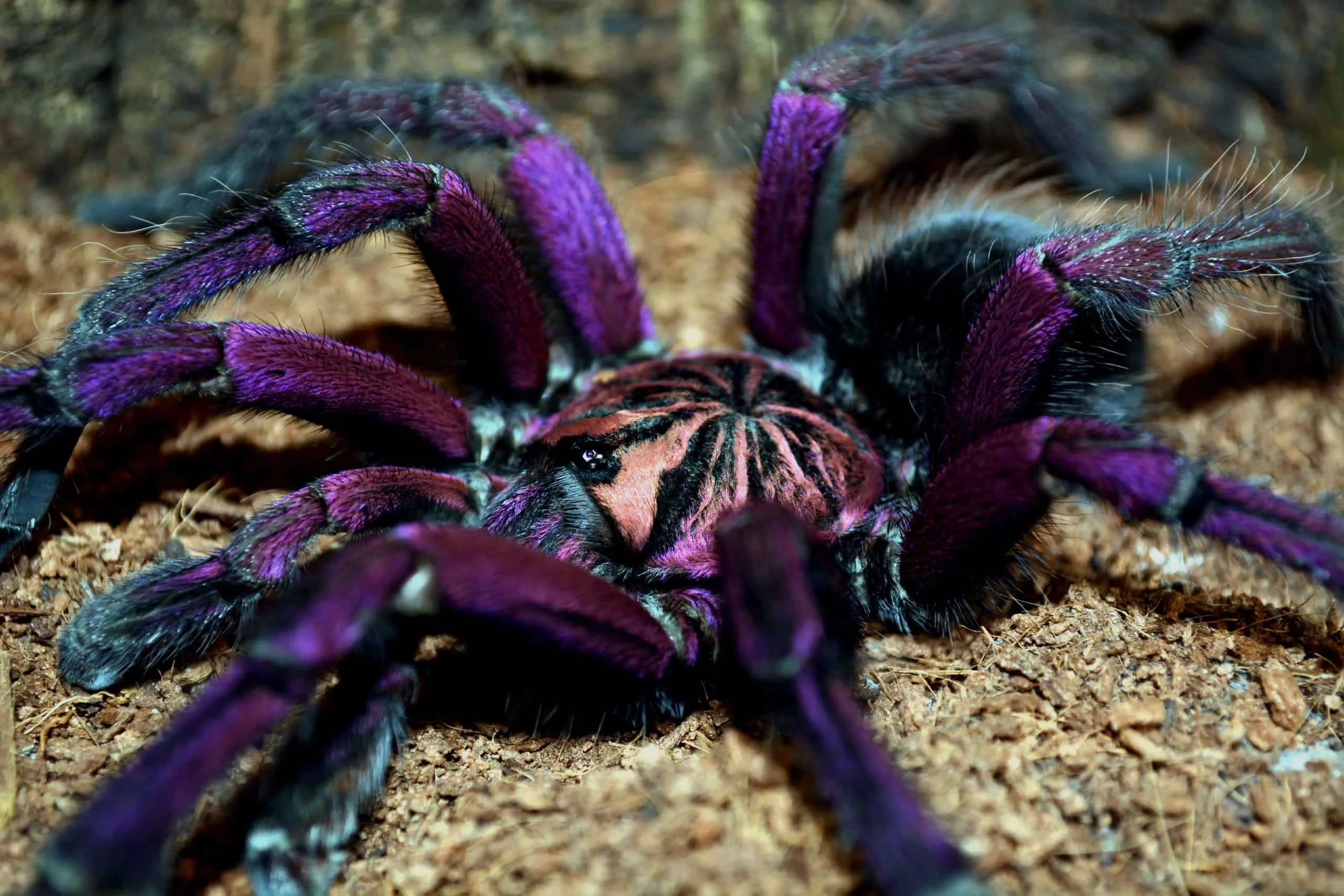
Tarantulas are naturally secretive creatures, so providing hiding places is an essential element of their care. Hiding places offer a sense of security and reduce stress, allowing the tarantula to feel safe and comfortable. A hide can be as simple as a piece of cork bark, a half-log, or a commercially available tarantula hide. Position the hide in a secure location within the enclosure, away from direct heat or light. Ensure the hide is large enough for the tarantula to fit comfortably inside, but not so large that it feels exposed. The addition of a hiding place will significantly improve your tarantula’s comfort level. Consider the species’ natural behaviour when selecting the hiding place, for example, burrowing species will appreciate a deep substrate to create their own hide. Regularly check the hiding place and clean it when necessary to maintain hygiene.
Feeding Your Tarantula
Feeding your tarantula correctly is essential for its health and growth. The diet should consist of appropriate insects, and the feeding frequency and portion sizes should be adjusted based on the tarantula’s age and species. Provide fresh water at all times. Always ensure the food is safe and properly sized to prevent any harm to the tarantula. A well-nourished tarantula will be more active, grow at a healthy rate, and have a higher chance of a long lifespan. Make sure to follow specific guidelines, as overfeeding can be just as detrimental as underfeeding. Monitoring the tarantula’s eating habits and adjusting the diet as needed is a crucial part of its care.
What Do Tarantulas Eat
The diet of a tarantula primarily consists of insects. Crickets, mealworms, and roaches are popular choices. The size of the insects should be appropriate for the size of the tarantula. Avoid feeding insects that are too large, as they can stress or even injure the tarantula. Variety in the diet is beneficial, so consider including different types of insects. Ensure the insects are gut-loaded with nutritious food before feeding them to your tarantula. This will provide added vitamins and minerals. Remove any uneaten insects from the enclosure to prevent them from bothering the tarantula. Always ensure the insects are free from pesticides or other harmful substances. Providing a healthy and balanced diet is a key factor in the well-being of your tarantula.
Feeding Frequency and Portions

Feeding frequency and portion sizes depend on the tarantula’s age, size, and species. Juvenile tarantulas often require more frequent feedings than adults. Young tarantulas can be fed two to three times per week, while adults may only need to be fed once a week or even less often. Adjust the amount of food based on the tarantula’s appetite. Do not overfeed, as obesity can be detrimental to the tarantula’s health. A tarantula that is too fat can have issues molting and may have its lifespan shortened. Observe your tarantula’s feeding habits to determine the appropriate amount of food. If the tarantula consistently refuses food, reduce the frequency or portion size. Always provide fresh water for your tarantula. If the tarantula is nearing a molt, it might refuse food a few days before the process begins.
Watering Your Tarantula
Providing fresh water is essential for your tarantula’s health. A shallow water dish should be available at all times. The dish should be sized appropriately to prevent the tarantula from drowning. Refill the water dish with fresh water daily to maintain cleanliness. Some tarantulas prefer to drink from the droplets of water sprayed on the enclosure walls, especially during molting. Monitor the water dish and clean it regularly to prevent the growth of bacteria or algae. The availability of fresh water is crucial for hydration and overall health. Dehydration can be a significant issue, so ensure your tarantula has constant access to clean water.
Handling Your Tarantula
Handling a tarantula is not necessary and should be approached with caution. Most tarantulas are not inclined to be handled, and doing so can cause stress and even lead to bites or the release of urticating hairs. When handling is necessary, use extreme care, and always prioritize the safety of the tarantula and yourself. Always know the species’ temperament and be aware of its defensive behaviours. Avoid sudden movements and any behaviour that might cause the tarantula to feel threatened. Regular, unnecessary handling is discouraged as it can be detrimental to the tarantula’s well-being. Observe your tarantula’s behaviour closely and, whenever possible, avoid handling. Proper precautions and understanding are necessary if you choose to handle your tarantula.
When to Handle
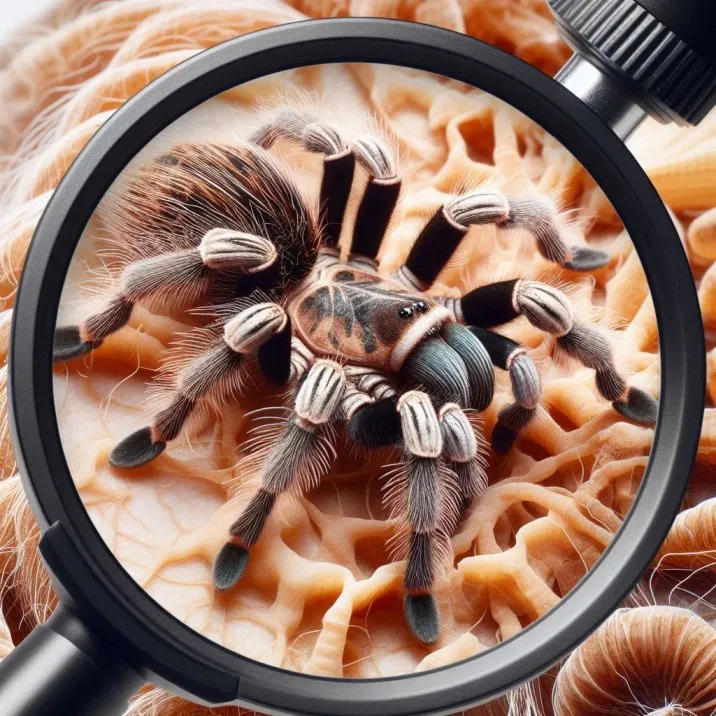
Handle your tarantula only when necessary. Such situations might include the need to move it for enclosure cleaning, medical purposes, or for a brief inspection. Always approach handling with caution and awareness of the tarantula’s behaviour. Avoid handling a tarantula immediately after it has eaten or during its molting process. Consider the species temperament and its potential defensive responses. Some species are more defensive than others and may be more prone to biting or flicking urticating hairs. Handling should be a rare occurrence. Be prepared to handle the tarantula safely and minimize the duration of handling to reduce stress. Prioritize the tarantula’s safety and minimize any risks of injury to both you and the tarantula.
How to Handle
If you must handle your tarantula, use extreme caution. Approach the tarantula calmly and speak softly. Avoid sudden movements or loud noises. Gently coax the tarantula onto your open hand, allowing it to walk onto your palm. Never try to grab or force the tarantula. Handle the tarantula over a soft surface, such as a bed or a sofa, to prevent injury if it falls. Ensure the tarantula has a clear path to return to its enclosure. Keep your movements slow and deliberate. If the tarantula shows signs of stress or aggression, such as raising its front legs or flicking hairs, immediately cease handling. Wash your hands thoroughly after handling. Always prioritize the tarantula’s well-being and handle it only when absolutely necessary.
Health and Common Issues
Understanding common health issues and recognizing the signs of a healthy tarantula is essential. A healthy tarantula will have a good appetite, an active behavior and a good overall appearance. Regular observation of your tarantula will enable you to quickly identify any abnormalities. Preventative care, such as providing a proper diet, maintaining a suitable enclosure and maintaining the correct temperature and humidity, will reduce the risk of health problems. Be prepared to address any health issues promptly. Common health issues include parasites, infections, injuries, and molting problems. Proper care, knowledge, and quick action are key in dealing with any health problems that may arise. If you have any concerns, seek advice from a vet or experienced tarantula keeper.
Recognizing Molting
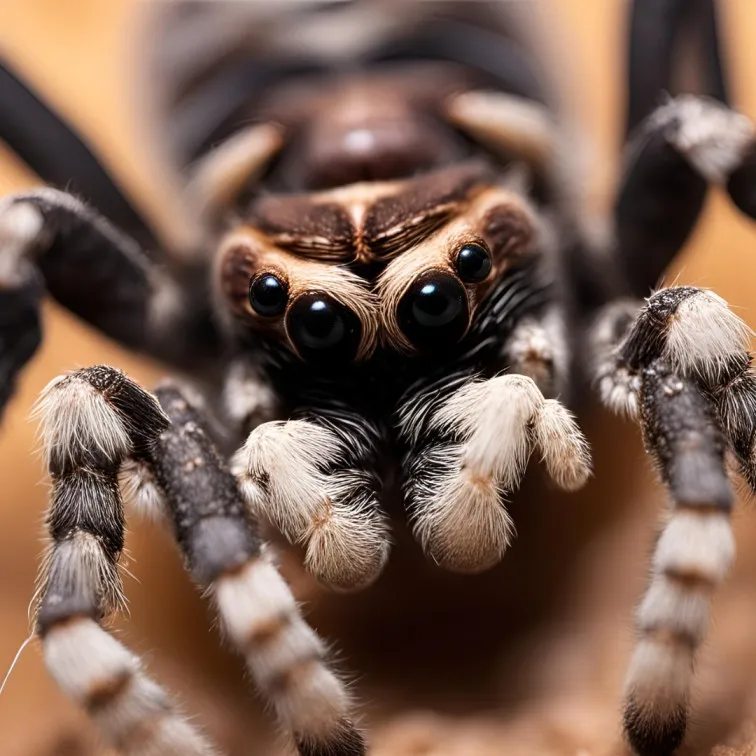
Molting is a natural process for tarantulas, where they shed their exoskeleton to grow. During molting, the tarantula will become lethargic and may stop eating. You may notice a change in its appearance, such as a dulling of the colours. Some tarantulas may lie on their back during the molting process. Avoid disturbing the tarantula during molting, as it is vulnerable during this time. After molting, the tarantula will be soft-bodied and vulnerable, so avoid handling it for several days. The molt provides important information about the tarantula’s health and growth, and should be handled with care. Remove the old exoskeleton after the tarantula has fully hardened. Ensure that the enclosure is kept clean during molting to minimize the risk of infection.
Common Health Problems
Common health problems include parasites, such as mites, and injuries from falls or bites. Infections can also arise from poor hygiene or inadequate environmental conditions. Watch for signs of illness, such as loss of appetite, lethargy, or unusual behaviours. If you notice any of these symptoms, consult a vet experienced with arachnids or an experienced tarantula keeper immediately. Ensure the enclosure is kept clean and free of harmful substances. Provide proper nutrition and environmental conditions to prevent health problems. Early detection and appropriate treatment are essential for managing any health issues. Always prioritize the tarantula’s well-being and seek professional help when needed. Preventing these health problems will ensure your tarantula remains healthy and thrives in its habitat.
Conclusion
Caring for a tarantula can be a rewarding experience. By following these guidelines, you will be well-equipped to provide a safe and healthy environment for your tarantula. Remember to research the specific needs of your chosen species and to continually learn and adapt your care practices as needed. Proper tarantula care involves understanding their unique requirements, providing a suitable habitat, and paying attention to their health and well-being. With patience, knowledge, and commitment, you can enjoy a fulfilling relationship with these fascinating creatures. Your dedication to the health and happiness of your tarantula will be greatly appreciated. Enjoy the journey of learning and caring for your new pet!
